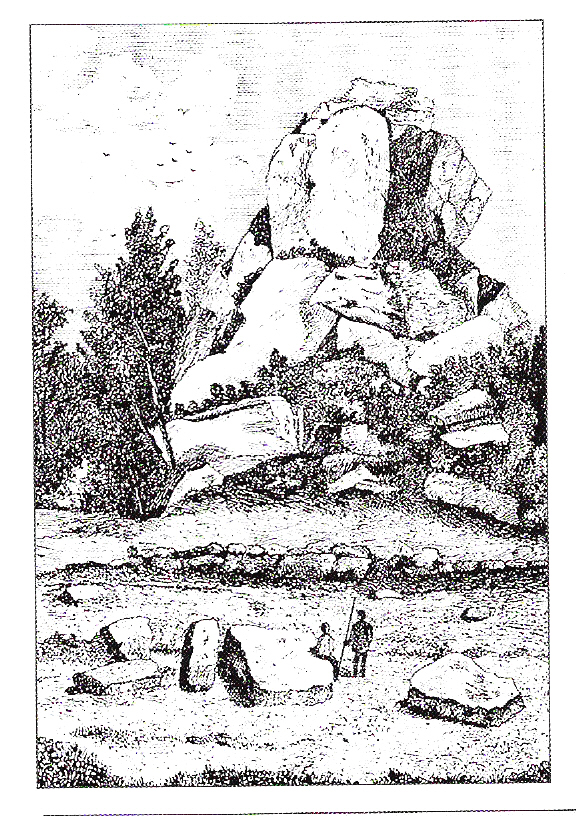
ROWLEY HILLS AND THE HAILSTONE
The Rowley hills (as featured in chapter 5 of Black Hearts And Blue Devils) are located in Rowley Regis, an area situated between a couple of miles south-east of Dudley in the (English) midlands and the setting for many of the scenes in "Black Hearts." The highest of them, Turner's Hill, is the highest point in the West Midlands, at 883 feet. From there, and from other locations on the hills it is possible to see great distances. One of the sights is a view of the Clee Hills, where, in the village of Nash, the Lively clan (our fictional protagonists) had their origins. Rowley hills are made up of basaltic rock, which has strange magnetic properties - one land surveyor who stood near the outcrop known as the Hailstone in the 17th century was stunned to find that his compass needle turned six degrees out of its true position.
As to this "Hail Stone." By the time of our story, which is the late 1880s, it had been blasted to but a poor remnant of its original size and form: there was I believe some blasting of it in the mid nineteenth century, alluded to by the old quarry hand, Tom Pickrell, in Black Hearts. However, prior to this, it had been famous, with people coming from far and wide to view it: in the seventeenth century, one Dr. Robert Plot (in The Natural History Of Staffordshire) described the Hailstone as being "as big and as high on one side as many church steeples are." The sonorous property of the rock also led him to muse that "there might be here a vault in which some great person of ancient times might be buried under this natural monument; but digging down by it as near as I could where the sound directed, I could find no such matter." And the name? It has been argued that the word "hail" is a corruption of the old word for "holy" and that this pillar may therefore have been a centre for worship in ancient times (in Black hearts And Blue Devils, I have suggested that it was used by the Druids - and indeed, the ancient highway previously known as The Portway (subsequently Portway Road, also featuring in the novel) is only about half a mile away. That "Portway" is reckoned to date back to pre-Roman times. If therefore, the place was sacred to the druids, it seems likely that the Saxons would view it in the same way, or at least have memories of its former status. And it may be that the name Hail Stone is derived from the Anglo-Saxon Haleg Stan, i.e. Holy Stone. It is no surprise therefore that the Hail Stone and its environs have always been looked upon as 'a bit spooky'. No coincidence that it was one of the reported haunts of the infamous Spring Heeled Jack, nor that the Hailstone happened to be situated in one of the two local quarries near which the local version, the Blue Devil, was encountered in the past!
Attached picture is of the Hail Stone as it looked before it was diminished by modern powder and dynamite. Not to be confused of course with The Hailstone public house where sergeant Abraham Lively is educated about the Blue Devils. The pub is still standing, although it is a Bangladeshi restaurant these days.
Post Views : 363